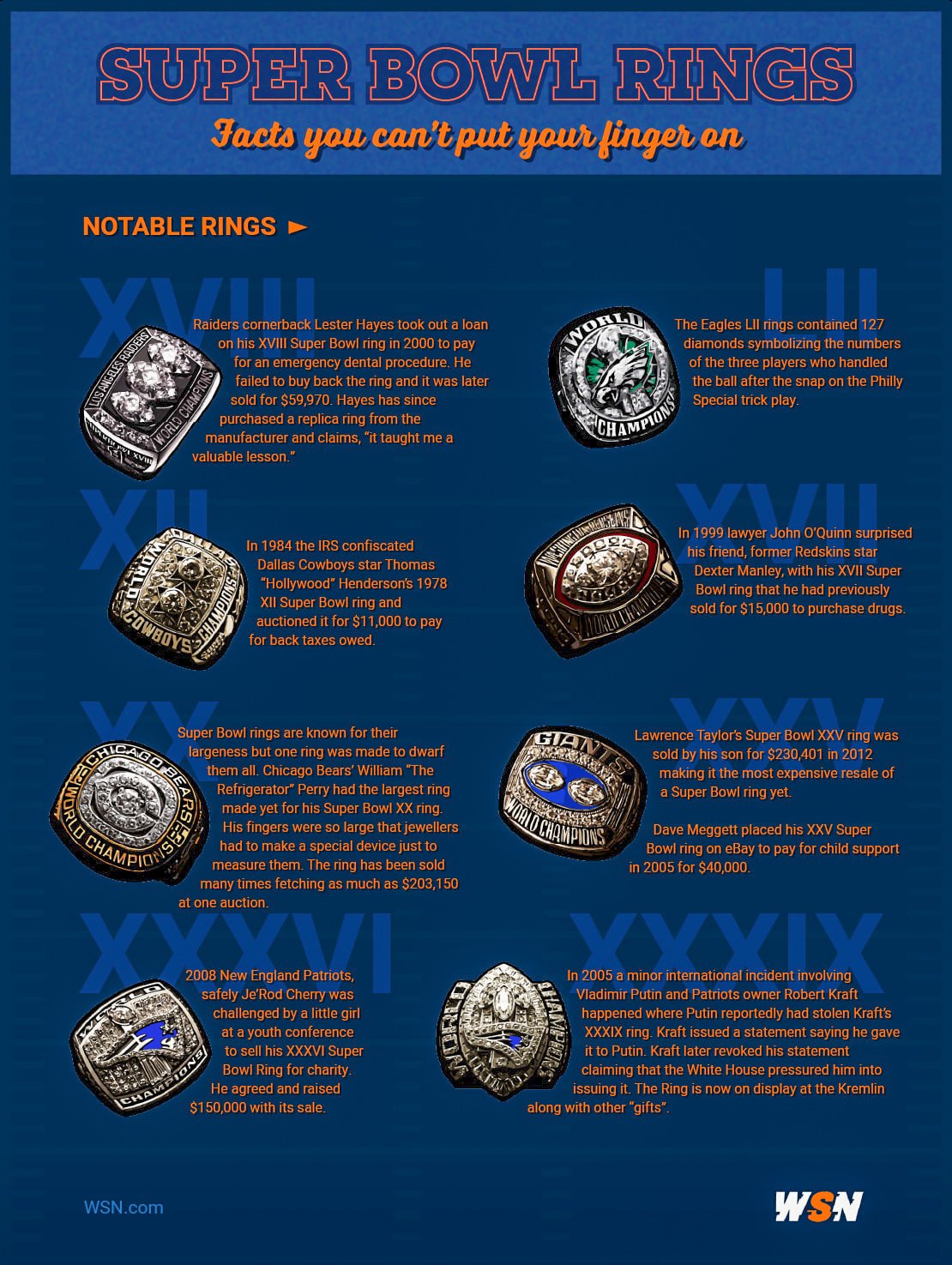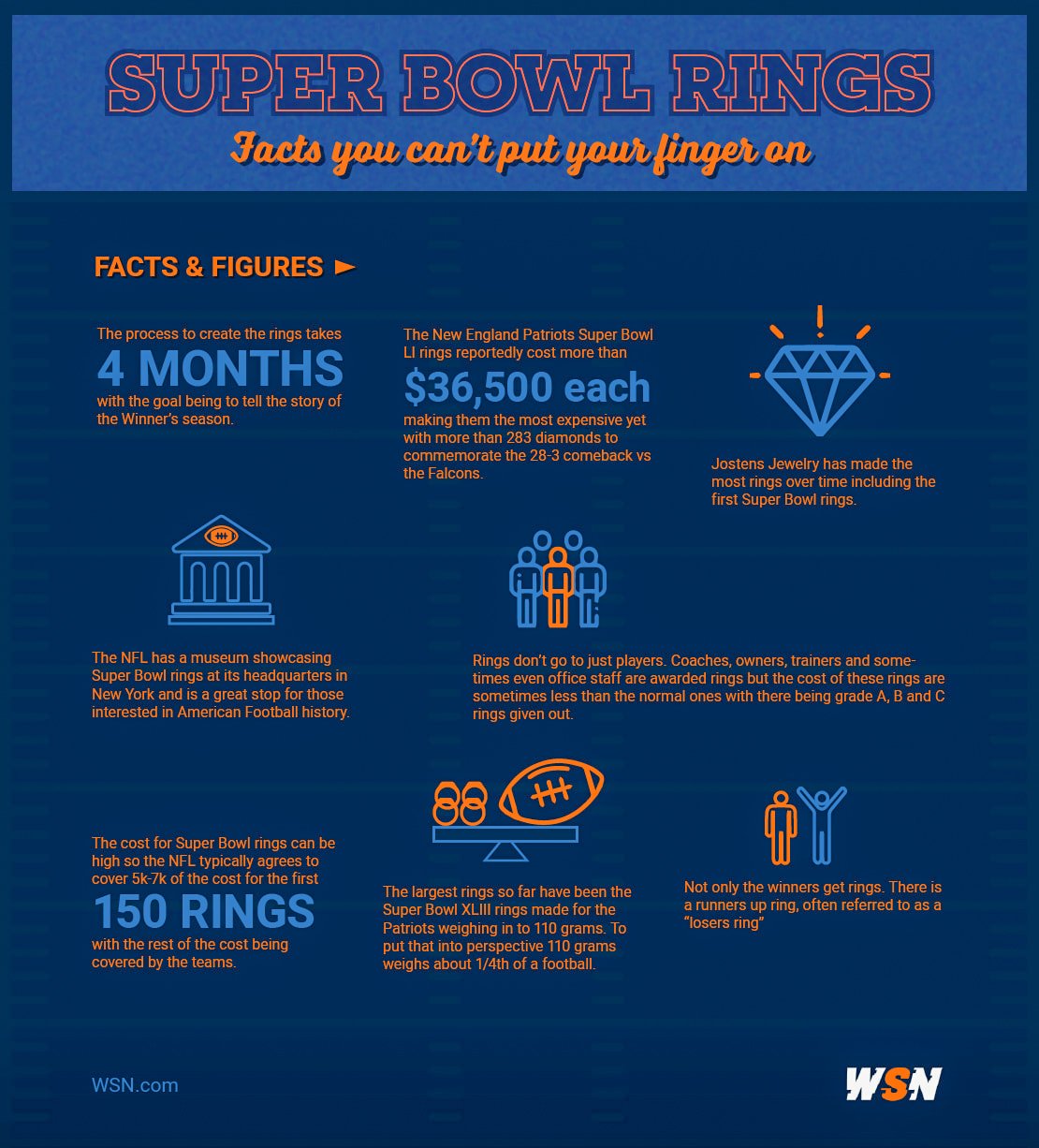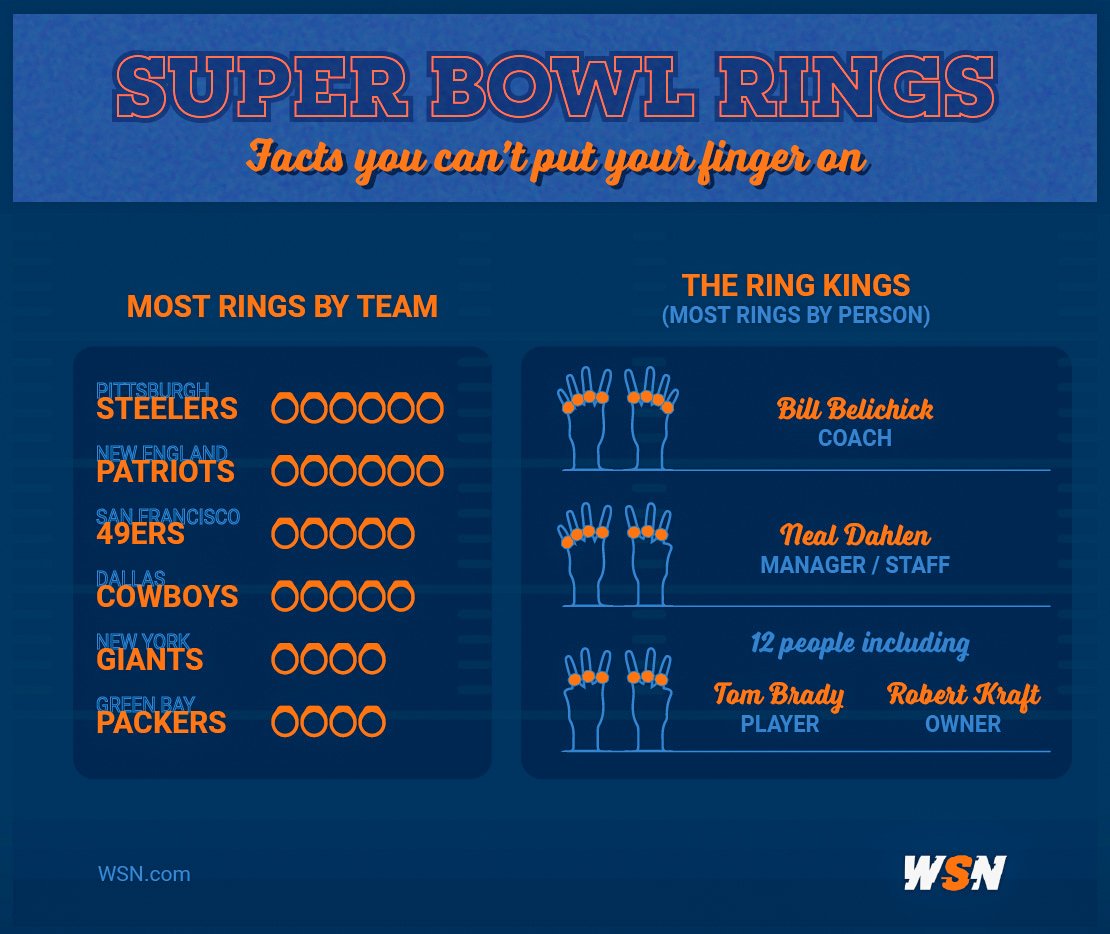What could be a more iconic symbol of the NFL than the Super Bowl rings? The rings are instantly identifiable for their largeness and the number of precious stones in them but how did the tradition get started and how did they evolve over time into the heavy-handed mega-bling that they are today and what are some facts about them?
Prize rings in Major League Sports is a North American phenomenon from the NFL Super Bowl Rings to the NHL Stanley Cup Rings and everything in between. This is because, in American sporting events, it is the team franchise that is awarded the trophy, not the players themselves. Usually, the trophy is given to the winners and then they must pass it on to next year’s winners. Think Stanley Cup or the Vince Lombardi trophy. This system, although rich in competition and heritage didn’t leave much for the individual players (aside from enormous salaries) to take home and show off.
We have Major League Baseball to thank for the Super Bowl Rings when they began the tradition of prize rings when they awarded the New York Giants for their 1922 World Series win against the Yankees. The idea of prize rings was so popular that it spread to other leagues and became the phenomenon that it is today.
In 1960 the American Football League began offering prize rings in the early 1950s known as Championship Rings to the Championship winners. The AFL created championship rings every year until the league’s merger with the NFL when the combined leagues took on the title of NFL and continued the tradition into the present day.

Players, coaches, team owners, trainers, staff and sometimes even fans are given rings by the winning teams. It is up to team leadership to decide who gets rings and what tier the rings shall be with there being three tiers A, B, and C with diminishing value.
Not all Super Bowl rings are created equally. With so many people who helped along the way to the Super Bowl its natural that everyone should be rewarded for the team effort, not just the players. With that in mind, there are roughly four categories of Super Bowl rings with anywhere from 300 to 900 being produced every year.
Grade A rings are the top-tier rings reserved for players, coaches, team owners, and other essential staff with only 150 typically being made. These rings come with big stones and even bigger price tags. The player and coach rings are usually personalized with the player’s numbers or names for extra personalization in order to tell the story of that individual’s contribution to that season.
These lower-grade rings are still expensive but are given out more liberally to team staff and are sometimes raffled out to fans for charity events. They have fewer/smaller precious stones and may not necessarily be made from the same precious metals as the A-grade rings.
The first instance of grade B and C rings being given out was for the Washington Super Bowl XVII win when many of the front office staff received rings made from cubic zirconia (fake diamonds).
Some C-level rings don’t even have fake stones but rather are unadorned copies of the expensive A and B-grade rings.
These are the lowest tier because they are not standardized and are not commissioned at the same time as the other rings. Fakes and replicas pop up occasionally, but any jeweler worth his salt can tell you instantly if the ring is a fake.
But not all replicas are low-grade. Several replicas have been made for the original recipients of the Super Bowl rings after they lost their original copy for one reason or another.
Commonly referred to as “losers” rings, these rings are awarded to the losing team and are rarely if ever worn. The loser’s rings are handed out because, before the merger of the NFL and the AFL the two separate leagues both awarded rings to their separate championship winners, this has carried over and morphed into the tradition of the loser’s rings.

Jostens Jewellers have made 34 of the 52 Super Bowl rings so far including the very first NFL Super Bowl rings. Jostens was founded in 1897 when they started the tradition of making rings for students to help them remember their time in high school (something Jostens still does), but it was in 1967 when they were chosen to lend their expertise to the newly created NFL to help make the team members and staff a set of rings to memorialize their victory.
In years when Jostens was not commissioned to make the Super Bowl winners' rings then companies like Balfour and Tiffany & Co. were brought in to make them. Tiffany & Co. is also known for their creation of the Vince Lombardi trophy, which is used as the official Super Bowl trophy year to year, the image of which is often laid down in diamonds on the face of the rings.
Work on the Super Bowl rings doesn’t start until after the Super Bowl and then it takes up to four months to complete the job with the design phase taking up to 8 weeks. The rings are typically awarded in a private ceremony around June.
The worth of Super Bowl rings varies wildly depending on the precious metal/stone value of the ring and its legacy. For instance, Vince Lombardi’s original Super Bowl I ring has an enormous legacy and could fetch an astronomical price tag if it were put into auction whereas a team trainer staff from a more recent Super Bowl while still being expensive would not fetch nearly as much.
The New England Patriots Super Bowl LI rings reportedly cost $36,500 each with more than 283 diamonds in each ring to commemorate their 28-3 comeback against the Falcons earlier in the season.
The up-front cost of the rings pales in comparison to their potential resale value with rings being resold for as much as $230.400.
The up-front cost of the Super Bowl rings seems to rise every year. The NFL has long agreed to pay $5,000.00 per ring for up to 150 rings for the winning team of the Super Bowl. This is the cost that the NFL has agreed to cover and anything beyond that is agreed to be paid for by the winning team.
The winning team can choose to make their rings much more expensive than the $5,000.00 or they can order more than 150 rings.
The first Super Bowl ring was awarded to the Green Bay Packers in 1967 to memorialize their victory over the Kansas City Chiefs. The ring was large and golden with a single large diamond sitting inside of a stylized football with the words, “WORLD CHAMPIONS 1966 GREEN BAY PACKERS” surrounding the outside of the ring.
The first Super Bowl ring set the tone for the coming decades with its larger-than-life attitude but it is unclear if anyone was able to predict how much bling the rings would eventually receive.

If the trend continues then we can predict the rings to gain more and more precious stones. The first Super Bowl ring had one large diamond followed by the next Super Bowl ring with three large diamonds ending with the most current rings having hundreds of diamonds in the shape of the Vince Lombardi trophy.
For the first time in 2010, the ring was made primarily out of a metal other than gold when the Green Bay Packers opted for platinum rings.
Perhaps in decades to come the Super Bowl rings will have miniature 3d replicas of the Vince Lombardi trophy made of diamonds soaring up from the ring. But anyone’s guess is as good as mine.
NFL Free Agency Tracker and Super Bowl Odds Watch
1 month ago | Grant Mitchell/fit-in/400x235/1665738247/neon-bonus-nfl-sign.jpg.jpeg)
Best NFL Betting Promo Codes for April 2025
1 month ago | Richard Janvrin/fit-in/400x235/1741337348/nfl-draft-impact-on-super-bowl-odds.jpg)
How Does NFL Draft Position Affect Super Bowl Odds?
1 month ago | Grant Mitchell
We support responsible gambling. Gambling can be addictive, please play responsibly. If you need help, call
1-800-Gambler.
WSN.com is managed by Gentoo Media. Unless declared otherwise, all of the visible content on this site, such
as texts and images, including the brand name and logo, belongs to Innovation Labs Limited (a Gentoo Media
company) - Company Registration Number C44130, VAT ID: MT18874732, @GIG Beach Triq id-Dragunara, St.
Julians, STJ3148, Malta.
Advertising Disclosure: WSN.com contains links to partner websites. When a visitor to our website clicks on
one of these links and makes a purchase at a partner site, World Sports Network is paid a commission.
Copyright © 2025
/filters:no_upscale()/fit-in/320x585/1706798018/super-bowl-rings.jpg)